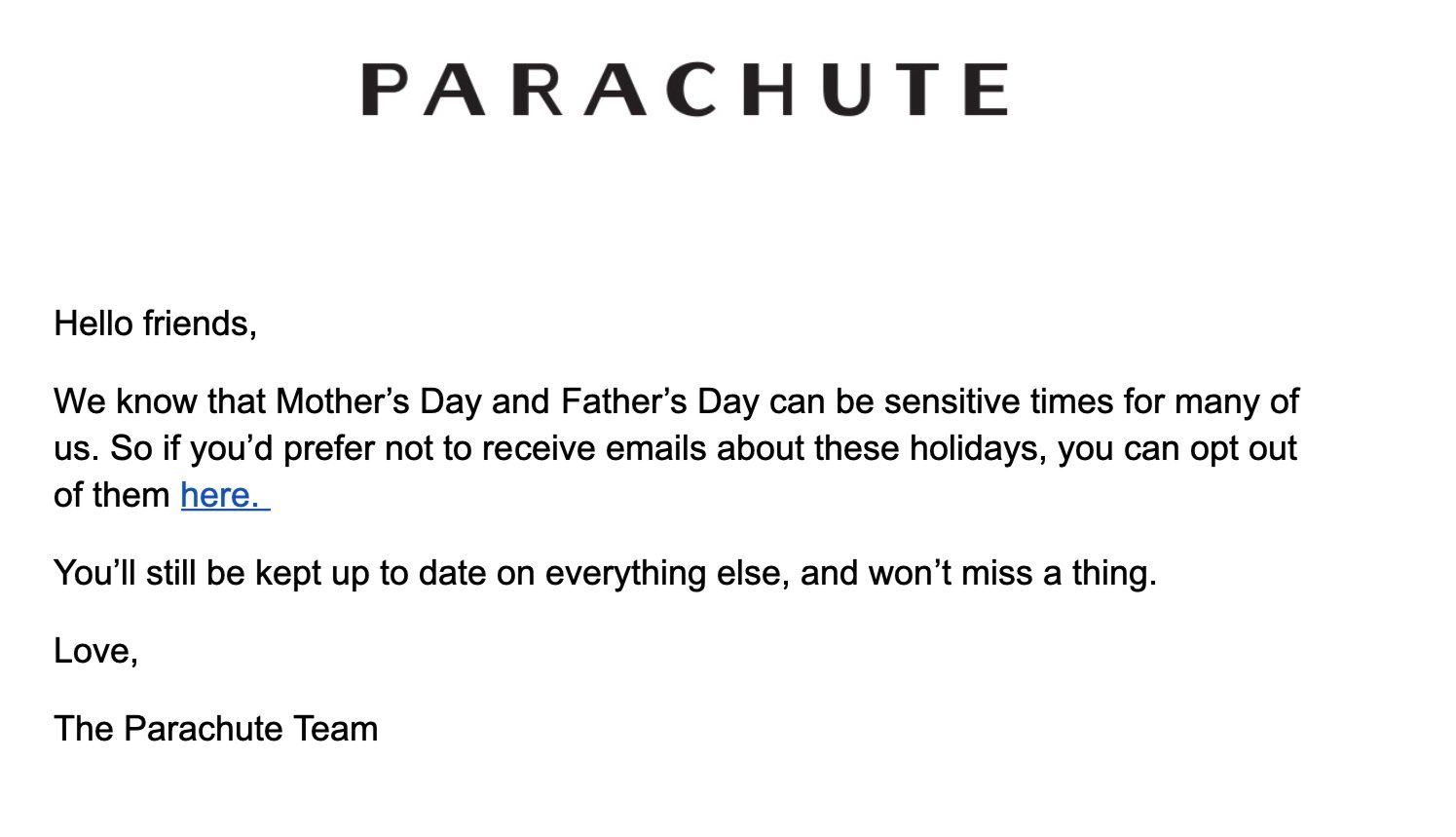The life-changing magic of opting out
Welp, I did mean to write more about Trauma Informed Design over here, but this year definitely got away from me. Since writing that last post, I’ve worked at Facebook, Nivi Inc., Lowe’s Tech, Uber, Mobiquity, Twitter, and tutored UX students at CareerFoundry. Needless to say, many of my passion projects got away from me.
Several weeks ago however, I had a wonderful conversation with Chelsea Larsson, the Director of Content Design at Zendesk. She contacted me on after searching online for content strategy and PTSD, and my blog came up. I think I might have been the only writer that did.
She asked me about how we can create better experiences for people with trauma in both content and conversational design, and we talked about what I mean by Trauma Informed Design. I realized as we were chatting, not only do I love talking about it, but that I actually have quite a bit to say.
One of the more recent examples that I can’t stop thinking about, is how I felt this spring when I had the opportunity to opt out of Mother’s Day marketing emails from Parachute. I was both stunned and incredibly grateful to know that my inbox would be even a little less cluttered with painful reminders.
Opt-out email from Parachute
So inspired, I went to do a little research of my own. I found this great article from NPR about the history of these opt-out emails, and learned that they were specifically implemented this year due to the unprecedented losses people were facing from the COVID-19 pandemic.
And this is one of the things that I love about accessibility and inclusion — when we really care about people, we often end up solving for other scenarios that we don’t even see yet. It’s a bit like how increasing font sizes not only helps people with low vision, but also those who are driving or just got their eyes dilated.
In this case, we’re all painfully aware of how many loved ones were lost this year. But people lose their parents every year, for all kinds of reasons, and sometimes it’s because they’ve cut off contact due to complex abuse. And the truth is? Loss and grief like this is traumatic no matter how it happens.
I just think, in working to change the idea that there is a normal, a way things “should” be (like we all must love and have parents we want to send gifts to) we must consider in our designs and our writing the millions and millions of people whose lives don’t align with that narrative. It’s really not that hard, it just takes a little awareness.
